The trend of installing the same flooring throughout house including bathrooms has sparked considerable debate among homeowners and interior designers. This strategy, which promotes a unified aesthetic by employing a uniform flooring choice across the entire home, is celebrated for its simplicity and the seamless continuity it offers.
Is the aesthetic and functional coherence achieved by using the same flooring throughout the house, including bathrooms, preferable, or does the distinctiveness and adaptability of varied flooring, specifically chosen for the unique function and character of each room, offer greater benefits?
This article explores the advantages and disadvantages of a uniform vs. diverse flooring approach, aiming to illuminate this modern design conundrum. We delve into how the selection of flooring impacts not just the look and feel of a home but also its practicality, guiding readers through the intricacies of this design decision.
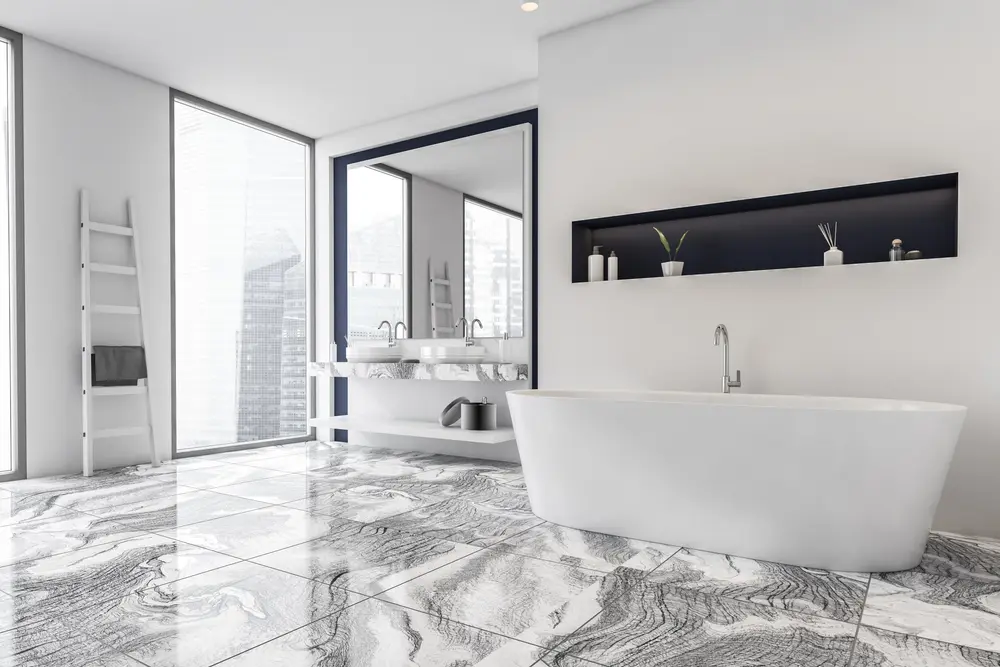

Advantages of Using the Same Flooring Throughout the House
Consistency and Flow
One of the most compelling arguments for selecting the same flooring throughout the house, including bathrooms, is the unparalleled consistency and flow it offers. This design choice fosters a seamless transition between rooms, eliminating the visual breaks that different floorings can cause. The result is a space that feels more unified and expansive. The principle of "the same throughout" doesn't just apply to aesthetics; it enhances the spatial dynamics of the home, making it feel more open and cohesive. Such uniformity in flooring can elevate the overall design, making every room feel connected, both visually and functionally.
Perceived Space
Incorporating the same floor throughout the house can significantly impact the perception of space, particularly when utilizing light-colored tiles or materials. These choices can reflect more light, contributing to a brighter and seemingly more spacious environment. The continuous flooring does not interrupt the eye, allowing for a smoother visual flow that can make even smaller spaces appear larger. This illusion of an open area is especially beneficial in homes with limited square footage, where maximizing the perception of space is crucial.
Ease of Maintenance
When it comes to maintaining a home, having floors to home that are uniform across all rooms simplifies the process. This uniformity eliminates the need to purchase different cleaning supplies or learn multiple maintenance routines for different types of flooring. For instance, the challenge of dealing with different flooring in the kitchen and living room is replaced by a single, streamlined approach to cleaning and upkeep, saving time and reducing hassle.
Simplicity in Decision-making
Choosing the same flooring for the house also simplifies the decision-making process. Instead of navigating through countless options for each room, homeowners can make a single, coherent choice that suits the entire house. This simplicity is not just a matter of convenience; it's a relief for those who find the plethora of available flooring options overwhelming. A uniform choice ensures that the aesthetic and functional needs of the home are met without the stress of matching different materials and styles.
Cost-effectiveness
Opting for whole house flooring can also be more cost-effective than purchasing different types of flooring for various areas. Buying in bulk often leads to discounts, reducing the overall cost of materials. Moreover, the installation process might be cheaper and faster, as contractors deal with a single type of flooring rather than adjusting their methods and materials for different rooms. This approach not only saves money but also streamlines the renovation or building process, making it more efficient and less stressful.
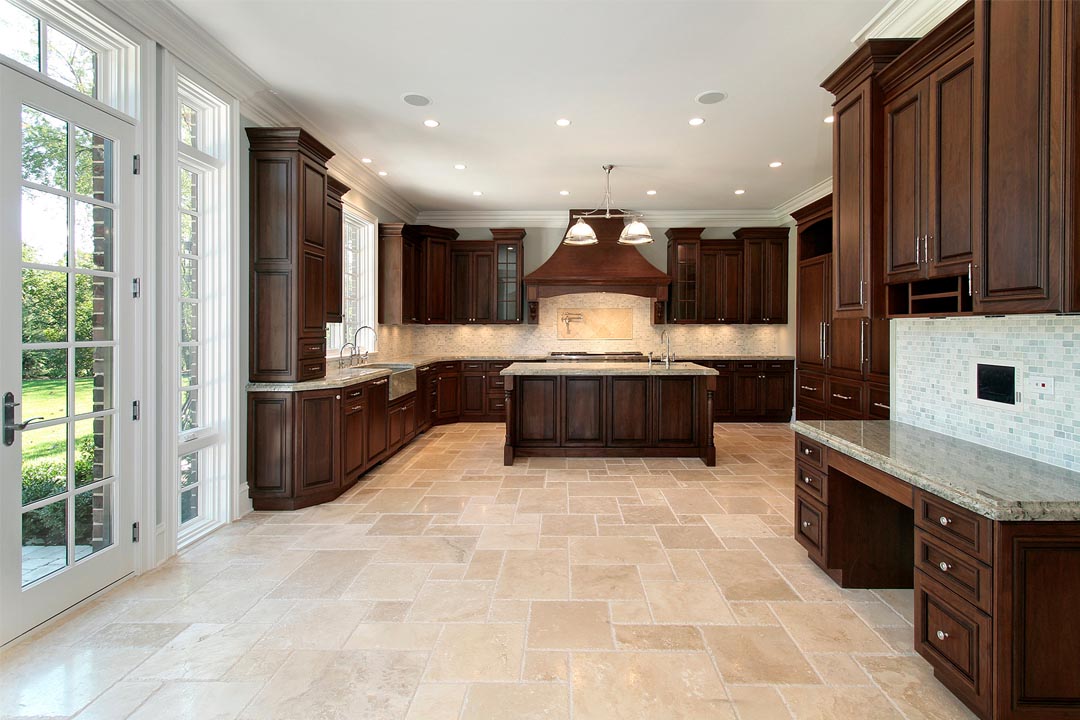
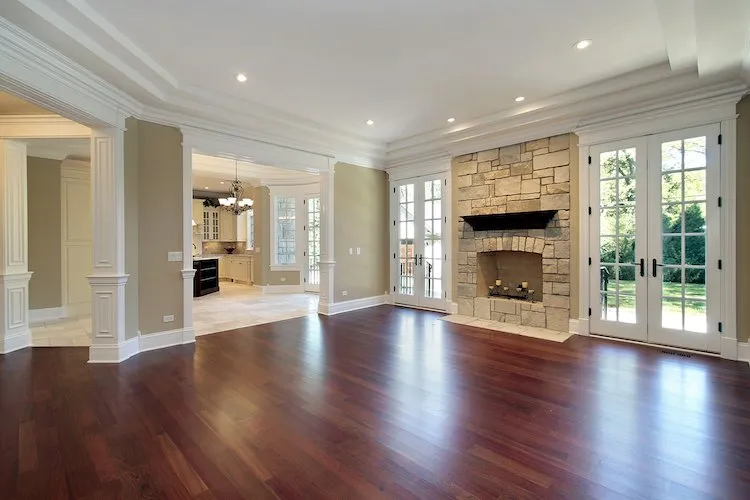
Disadvantages of Using the Same Flooring Throughout the House
Monotony
While the consistency of using the same flooring throughout the house, including bathrooms, offers numerous benefits, it also carries the risk of monotony. The uniformity that enhances spatial flow can, over time, diminish the visual interest and uniqueness of each room. Without the distinction that different flooring provides, spaces may blend too seamlessly, resulting in a lack of definition that makes each area feel less distinct. This uniform approach might not cater to those who appreciate the diversity and character that varying floorings can introduce to a home's design.
>> See 8 Easy Tile to Wood Floor Transition Idea
>> See 8 Types of Transition Strips
Mismatch with Room Functions
Another consideration is the suitability of a single flooring type across different areas with varying functional demands. For instance, the requirements for flooring in kitchens and living rooms can significantly differ, with the former often needing slip-resistant and easy-to-clean surfaces due to the likelihood of spills. Bathrooms, too, require water-resistant flooring to prevent damage and mold growth. Using the same flooring throughout might not meet these specific needs adequately, potentially compromising safety and longevity in certain areas of the home.
Lack of Character
Different flooring for different rooms not only addresses functional needs but also contributes to the character and atmosphere of each space. A uniform flooring choice across the entire house can underserve the unique identity of each room. The individuality of spaces like the living room, kitchen, or bedrooms may be diluted, failing to capture the essence and purpose of each area. This approach can limit the homeowner's ability to personalize and distinguish their living spaces, making the home feel less tailored to their tastes and lifestyle.
Durability Concerns
Selecting a single type of flooring for the entire house also raises durability concerns. Materials that are perfect for low-traffic areas might not withstand the wear and tear of high-traffic zones, leading to premature damage and the need for replacements sooner than expected. For instance, the softness and comfort desired in living room flooring might not be as durable in a kitchen or entryway, where foot traffic is heavy, and the risk of spills and stains is higher. This mismatch can result in increased maintenance costs and hassle, negating some of the uniform flooring choice's initial benefits.
Acknowledging these disadvantages is crucial for homeowners contemplating whether to use the same flooring throughout their house. It's important to weigh these potential drawbacks against the advantages to make an informed decision that best suits the individual needs and character of their home.
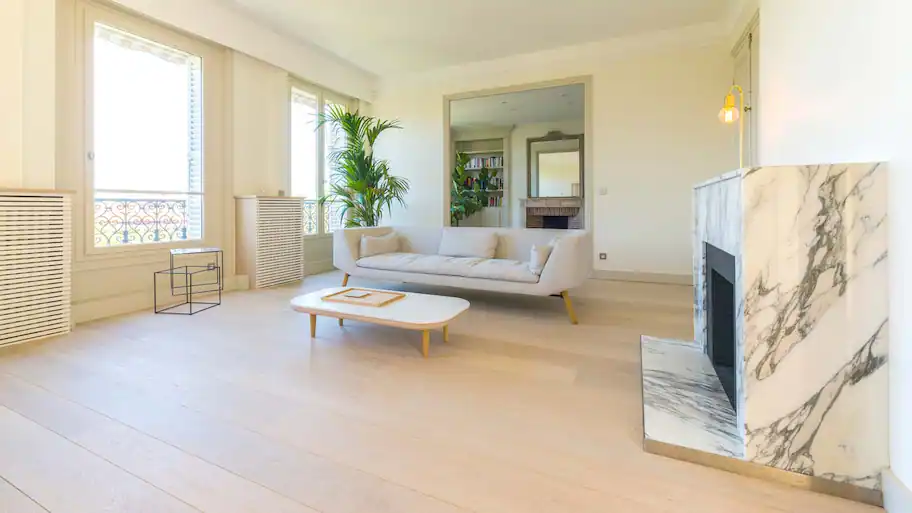
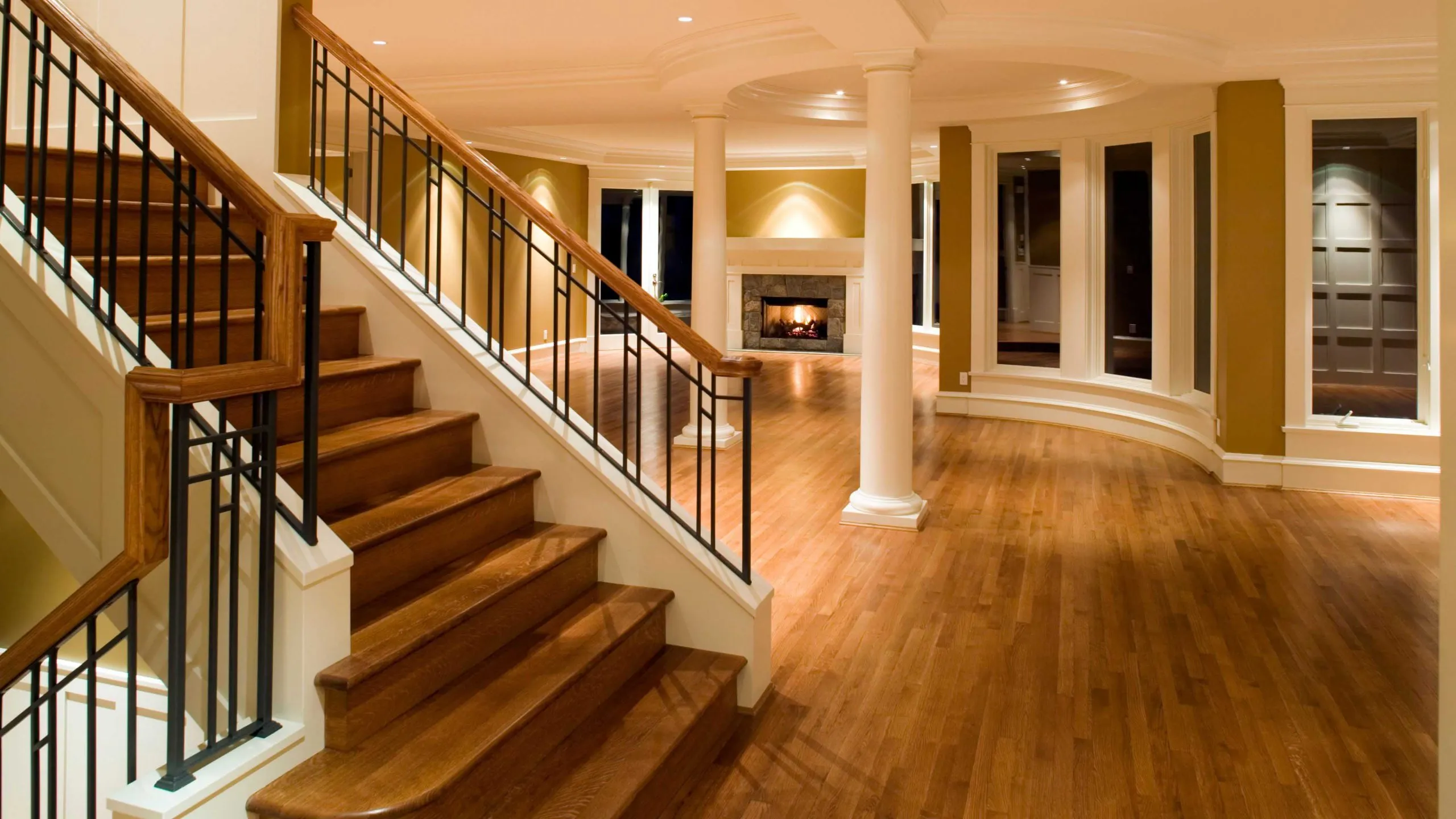
Conclusion
In conclusion, the decision to adopt whole house flooring or to select different flooring for different rooms is a complex one, fraught with both aesthetic and practical considerations. While the uniformity of the same flooring throughout the house, including bathrooms, offers undeniable benefits in terms of consistency, flow, and potentially cost-effectiveness, it also presents challenges such as monotony, mismatch with room functions, a lack of character, and durability concerns.
Ultimately, the choice hinges on individual preferences, the specific needs of spaces like the living room flooring, and the overarching design vision for the home. Homeowners are encouraged to weigh the pros and cons carefully, considering their unique situation. Consulting with a professional can provide valuable insights, ensuring that the final decision enhances the home's distinct character and fully serves its inhabitants' lifestyle and preferences. This careful consideration ensures that whether the flooring remains the same throughout the house or varies to reflect the unique identity of each room, the home will be a reflection of its owners' tastes and a haven tailored to their needs.
FAQs about Same Flooring Throughout House Including Bathrooms
Does bathroom flooring need to match throughout the house?
While bathroom flooring doesn't necessarily need to match the rest of the house, consistency in flooring can enhance the home's overall aesthetic and flow. However, selecting different flooring for bathrooms can cater to specific functional needs, such as moisture resistance, without compromising on style. Ultimately, the decision should balance practicality with personal design preferences.
Is it okay to have the same flooring throughout the house?
Absolutely, using the same flooring throughout the house can create a sense of unity and spaciousness, contributing to a cohesive design theme. However, it's also perfectly acceptable to mix flooring types to define different areas or meet specific needs. The key is ensuring that the flooring choices align with your long-term satisfaction and the functional requirements of each space.
Should bathroom floor be different from the rest of the house?
While there's no strict rule requiring bathroom floors to differ from the rest of the house, choosing a different flooring for bathrooms can address practical concerns like water resistance and safety. However, for those seeking a streamlined look, consistent flooring can also work if chosen wisely. Consider your lifestyle, cleaning habits, and aesthetic goals when deciding.
Can the kitchen and bathroom floor be the same?
Yes, kitchen and bathroom floors can be the same, especially if you select materials that are durable, easy to clean, and moisture-resistant. This approach can unify your home's design while still meeting the practical demands of these high-traffic, wet areas. However, ensure the chosen material complements both rooms' aesthetics and functionality.
Does tile in the bathroom increase home value?
Installing high-quality tile in the bathroom can significantly enhance home value, offering a luxurious and durable finish that appeals to potential buyers. Particularly, modern and timeless tile designs can transform the bathroom into a standout feature, contributing positively to the home's overall marketability and appeal.
What adds the most value to a bathroom?
Strategic upgrades like installing efficient fixtures, modernizing showers and bathtubs, updating vanities, and choosing timeless tiles can significantly boost a bathroom's value. Additionally, focusing on lighting and color schemes that create a relaxing ambiance can make the bathroom more appealing to future buyers, maximizing your return on investment.
Do walk-in showers lower home value?
Contrary to lowering home value, installing a well-designed walk-in shower can actually increase it, particularly in markets where modern, accessible designs are in demand. However, retaining at least one bathtub in the home is advisable to appeal to a broader range of buyers, including families with young children.


